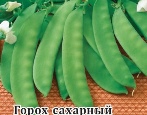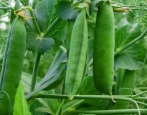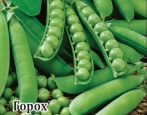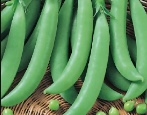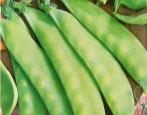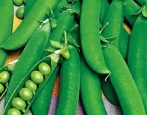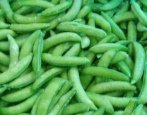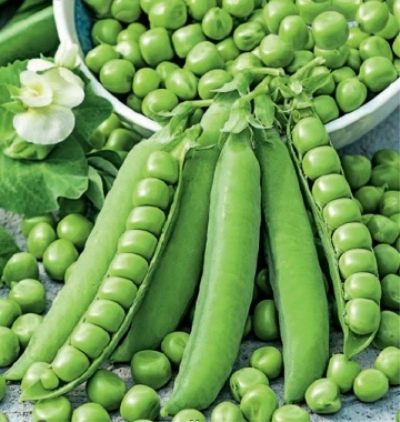
- Authors: Samarin N.A., Drozd A.M., Oleshko L.N., Makasheva R.Kh., Adamova O.P.
- Year of approval: 1977
- Ripening terms: early maturing
- View: peeling
- The period from germination to technical ripeness: 46-53 days
- Stem length, cm: 50-55
- Total number of internodes: 13-20
- Number of internodes before the first inflorescence: 8-10
- Sheet: common type with two pairs of light gray-green ovoid leaves
- Flowers: white, medium
Alpha peas have been known in the country for a long time. This is one of the oldest peeling varieties that have become widespread. Alpha requires good care from summer residents, regular care.
Breeding history
Alpha green peas were obtained at the All-Russian Research Institute of Plant Growing, whose specialists worked in collaboration with the Crimean Experimental Breeding Station. The authors of the variety were Samarin N.A., Drozd A.M., Oleshko L.N., Makasheva R.Kh. and Adamova O.P. Culture has been in the State Register since 1977.
Description of the variety
Alpha is an early hulling variety. It is grown both for itself and for sale. Has many positive qualities:
simultaneous ripening of beans;
the ability to bear fruit well in the open field;
resistance to temporary frost;
the possibility of cultivation almost throughout the country;
the possibility of using it as a green manure;
good marketable appearance.
However, the variety also has a number of serious disadvantages:
whimsical care;
poor resistance to some diseases;
average yield.
Characterization of the appearance of plants, beans and seeds
When describing a plant of the Alpha variety, the following key features should be noted:
semi-dwarf bushes, about 50-55 centimeters high;
stems of a simple structure, not fasciated;
internodes are short, from 13 to 20 in total, up to the first inflorescence - 8-10;
leaves are classic, light gray-green, ovoid;
the flowers are white, not particularly large, there are usually two of them on each peduncle.
Alpha beans have a pointed tip and a shape that can be either saber or slightly curved. Other important points:
length - 7-9 centimeters;
width - 1.2-1.4 cm;
at technical ripeness, the beans acquire a dark green color.
Each bean contains about 5-9 seeds. The grains are yellow-green in color.
Purpose and taste
Despite the fact that the originators bred the variety for canning, many people use it fresh. This is not surprising, because the taste of Alpha peas is excellent. And also the variety is often frozen for use in winter. It is only important to note that peas of this variety are very high in calories, their calorie content is almost 2 times higher than that of other varieties. Therefore, it should be used with caution by people on a diet.
Ripening terms
Alpha peas are an early maturing variety. The ripening period is 46-53 days. The plant ripens amicably, which contributes to faster and easier harvesting.
Yield
Alpha green peas do not shine with outstanding results, but many gardeners have enough of what they collect from the bushes. In addition, the amount of the crop is highly dependent on the climate and the characteristics of the care. So, on average, beans can be harvested from 8.5 to 20.8 tons per hectare, and peas will come out about 4.8-9 tons.
Growing and care
Gardeners try to plant Alfa peas from April 25 to May 10, however, March planting is also practiced in the southern regions.Seeds will sprout already at 2-5 degrees Celsius, they are not too afraid of the cold. Many summer residents even plant twice, and some even use the conveyor technique, planting new grains every 2 weeks.
Before planting, the grains are stratified in warm water (55 degrees), disinfected and soaked. You can germinate them, but the procedure is optional. The planting is carried out according to the scheme of 30x15 centimeters with a depth of 3-4 cm into the substrate. The soil is compacted and covered with a shelter to protect it from bird attacks.
The main and most important stage of care is the organization of watering. At first, it will be enough once a week, then when the peas bloom, watered at least twice in 7 days. The number of watering will have to be increased in hot conditions, since it is advisable not to allow the topsoil to dry out.
For top dressing, you can use both organics and minerals. If the first option is chosen, then liquid organic matter is taken in the amount of 1 tablespoon and diluted in a bucket of water. Usually 1 sq. m use 3 liters of composition. Pour it under the root. The first time is fertilized at the beginning of flowering, the second - immediately after the formation of the blades. If the gardener prefers minerals, then the first fertilizer should be applied when the sprouts reach 5-8 centimeters. This should be a granular top dressing, scattered over the area, followed by watering. The second time is also fertilized after the appearance of the shoulder blades, using a complex mixture for breeding. You need to water the aisles.
In addition to the above measures, Alfa peas will require other measures.
Topping. You need to wait until the sprouts reach a quarter-meter growth, and then pinch the tops.
Support installation. Many argue that support is not required for Alpha, but it is still better to tie up the plant. The beds will look tidy, get more sun and be easier to harvest.
Soil care. It is necessary to regularly clean the pea plantation from weeds. And also the soil should be loosened at least a couple of times a week.
Hilling. It can be carried out once, when the peas grow to 15 centimeters.

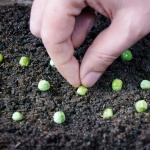
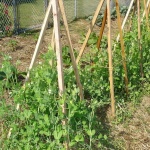

Soil requirements
Planting Alpha should be done on drained and non-acidic soils. Both clayey options and lighter loams and sandy loams are suitable. In the autumn period, the soil is dug up and fertilized with minerals: potassium and phosphorus. The introduction of fresh organic matter is prohibited. Re-digging is done in the spring. Important: you can grow peas in the same place every 4 years.
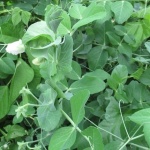
Disease and pest resistance
Variety Alpha is relatively resistant to ascochitosis and fusarium. It can also suffer from powdery mildew in high humidity. Harmful insects do not bypass the variety. The most problems for summer residents are pea moths and nodule weevils. All these insects are recommended to be removed immediately with insecticides.
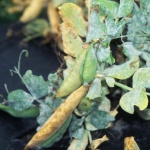
Review overview
Alpha is often found in reviews of early pea varieties. Both children and adults really like sweet fruits, and it often happens that there is nothing to preserve. Summer residents are pleased that peas sprout together, have a beautiful appearance, and are not afraid of frost. Of course, you need to tinker with cultivation, and you will have to protect from insects, but for experienced summer residents this is not a problem.

